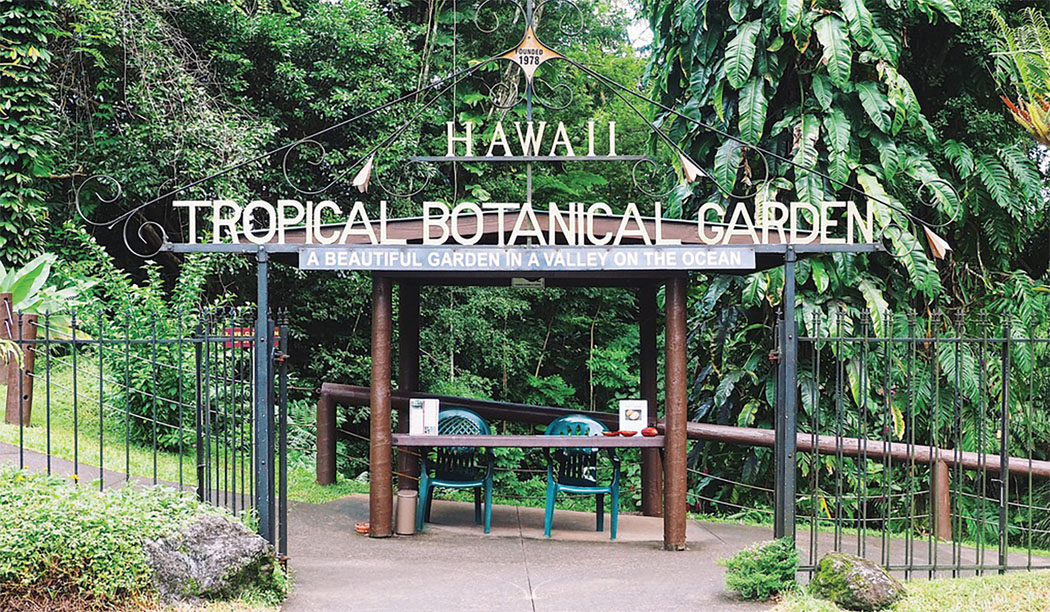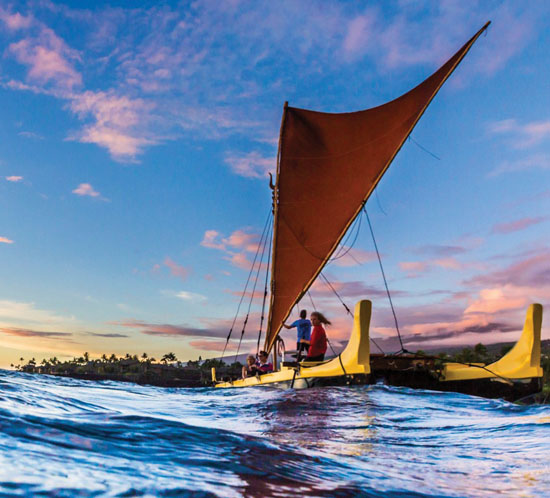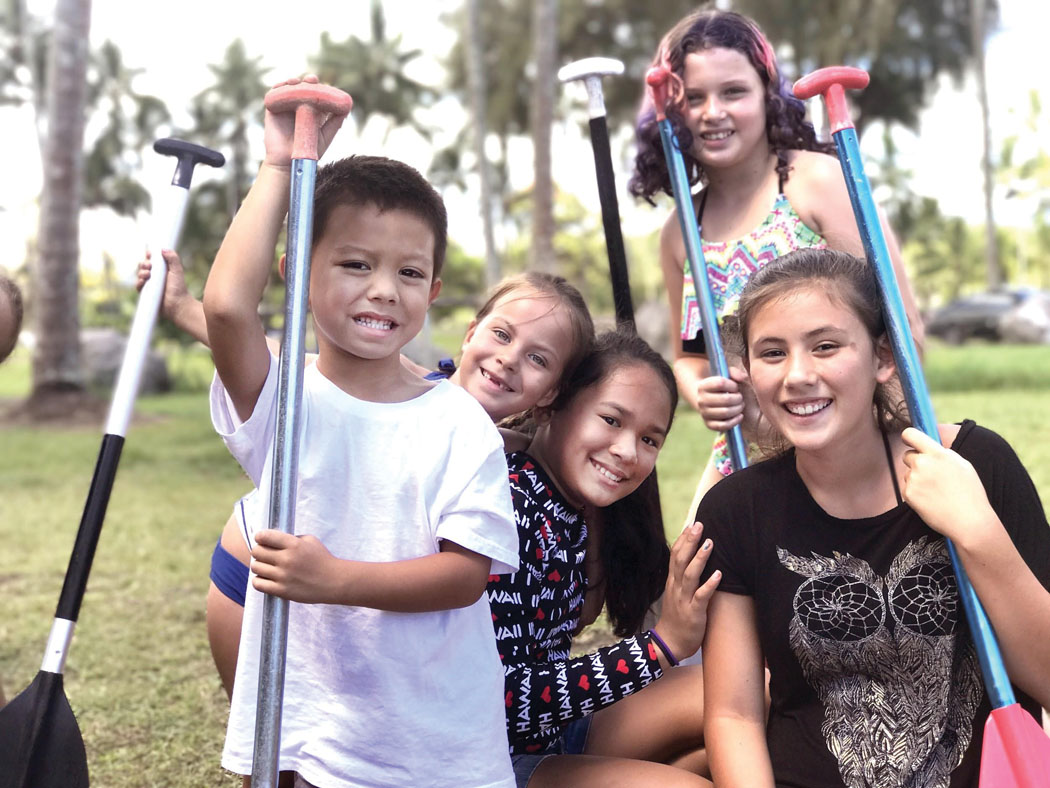
The Boys & Girls Club of the Big Island
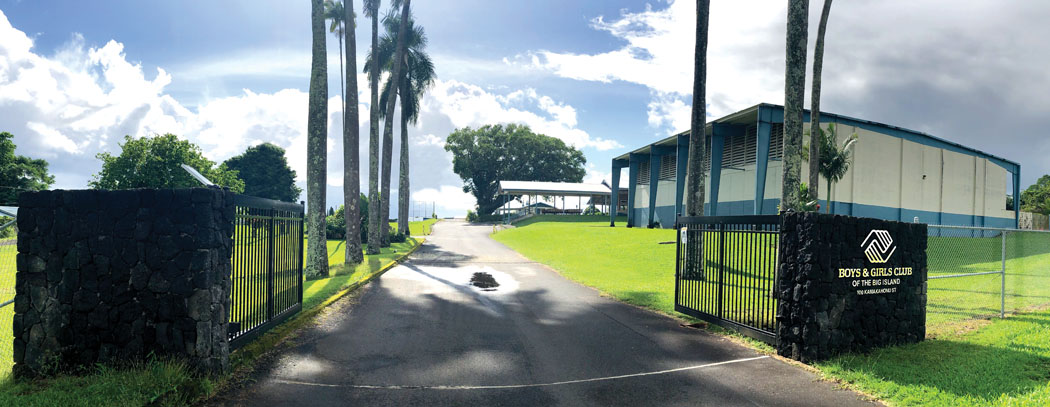 By Mālielani Larish
By Mālielani Larish
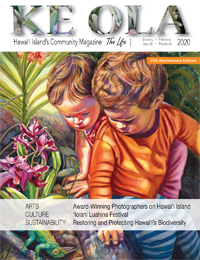
Embraced by trade winds and an expansive view of the bay, 100 members of the Hilo Boys & Girls Club sing “Ho‘o Nani” to bless the afternoon meal. With a “Pa‘i ka lima!” from their leader, the students clap twice and then flood towards the kitchen in a jubilant tide of laughter and chatter.
Between bites of chicken spaghetti, carrots, and garlic bread, the students explain what they enjoy about attending the Boys & Girls Club’s signature after-school program. The consensus is clear: students love the opportunity to form lasting friendships, play games and sports, and learn more about Hawaiian culture. Parents love that the program fosters academic excellence, healthy lifestyle choices, and leadership skills—complete with quality academic support and nutritional supplementation—at a cost of only $10 per year.
Proud to be the state’s longest-running Boys & Girls Club, the Boys & Girls Club of the Big Island provides a fun, safe, and caring environment for approximately 1000 youth during after-school hours. Within the last three years, BGCBI has overcome financial hurdles, opened three new locations, and added vital services for its members.
Righting the Canoe
When Chad Cabral became the club’s CEO in May 2016, the nonprofit suffered from a $600,000 budget deficit, with a $1.2 million budget waiting to be amassed. Chad recalls that his initial discussions with board members and staff revolved around the question, “How are you going to close programs?”
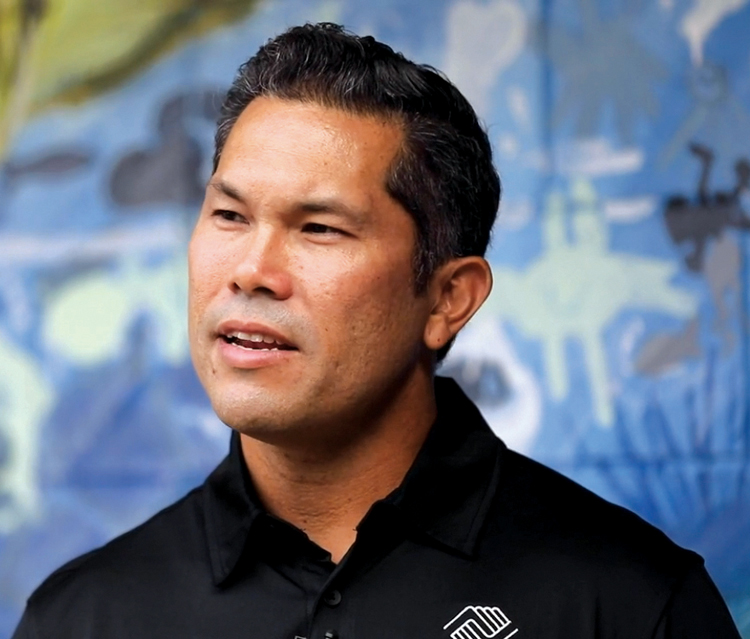
Confident in the value of the organization’s youth development efforts, which have benefited the island since 1952, Chad knew that he didn’t need to change the organization’s mission, staff, or programs. Instead, Chad focused on forming partnerships with local government, networking with businesses and the public, streamlining direct service operations, and increasing the nonprofit’s visibility. In addition to performing his required CEO functions, Chad volunteered his time as the organization’s janitor, lawn mower, and T-shirt printer to save on expenses.
Identifying that most of the kids that the Boys & Girls Club serves are of Native Hawaiian ancestry, Chad secured additional partnership support from the Office of Hawaiian Affairs and Kamehameha Schools.
BGCBI is proud to incorporate a strong cultural learning component into its youth programs. Students learn and practice Hawaiian oli (chants) every day as part of their afternoon protocol. Students also conduct weekly research on a wahi pana (significant historical and cultural place) in their community and share their findings with youth at other site locations via video. Hilo students regularly engage in service projects at the Waiāhole Loko I‘a (fish ponds) in Keaukaha.
Through Chad’s visionary leadership, the nonprofit not only kept all of its services open, it also opened three West Hawai‘i clubhouses, improved program access for East Hawai‘i and Ocean View members, and initiated a healthy full-meal program at the Hilo site.
Developing Chapters in West Hawai‘i
The Boys & Girls Club identified three communities in West Hawai‘i that had the highest likelihood of families in need: Kealakehe, Ocean View, and Ulu Wini. When BGCBI opened the Kealakehe chapter in September 2017, member applications soon exceeded the number of available spaces, necessitating a waitlist. Conveniently located on Kealakehe school property, the site serves 100 kids, many of whom live in low-income housing projects or neighboring Hawaiian Homelands properties.
Bren Bailey, whose son has attended the Boys & Girls Club at Kealakehe for two years, says that the program offers much more than she expected. She loves spending quality time with her son after she picks him up from the program, noting that she doesn’t have to worry about coaxing him to do homework, because it’s already completed by the time she arrives.
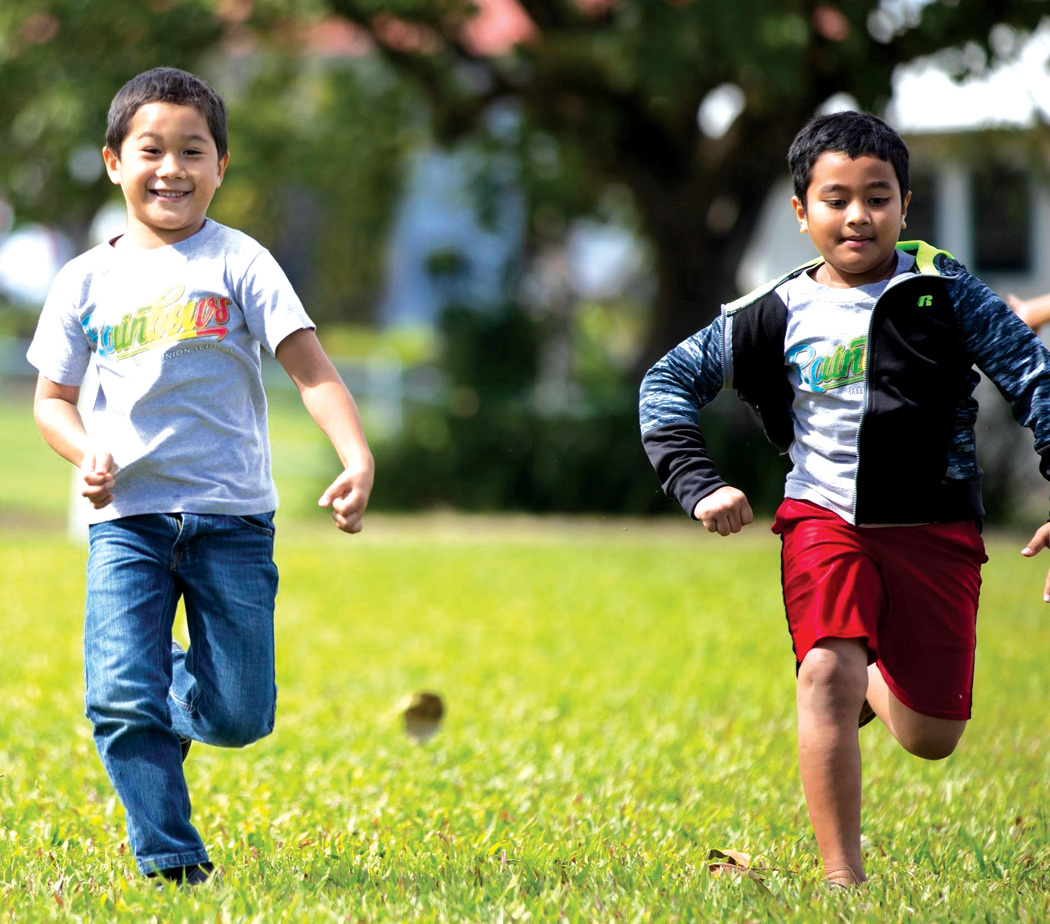
“I know that he’s in good hands,” she reflects. “All the staff is amazing and show how much they care for each student.”
Janet Salgado-Cruz has five kids, three of whom attend the Kealakehe Boys & Girls Club program. As a native Spanish speaker, Janet felt inadequate when she tried to help her children with their homework, so she greatly appreciates how her kids receive quality homework assistance in English. Like their peers in Hilo, her kids love the outdoor games and Hawaiian cultural activities provided by the program. Janet muses, “Sometimes they get mad at me because I come early for them…they tell me: don’t come for me until we’re done with the Hawaiian cultural studies!”
Before the Boys & Girls Club opened a site in Ocean View, no organized after-school youth development program existed in the community to actively engage kids in a meaningful way. In partnership with the Ocean View Community Association, Na‘ālehu Elementary School, and the Department of Education, BGCBI opened a site at the Ocean View Community Center and then rerouted the school bus so that students arrive directly at the center after school. As an added bonus for Ocean View families, who often commute long distances for work and tend to have a greater economic need, a Boys & Girls Club van shuttles youth participants home in the evening.
In August 2019, BGCBI launched an additional chapter at Ulu Wini, the county-owned supportive family housing program located mauka (mountain-side) of Kaloko Industrial Area in Kailua-Kona. Hawai‘i Affordable Properties and the County of Hawai‘i partnered with BGCBI to establish the Ulu Wini site, which serves 120 kids and also has a waitlist. BGCBI now boasts seven site locations: Hilo, Kea‘au, Pāhoa, Pāhala, Ocean View, Kealakehe, and Ulu Wini.

Bringing Hope to Families in Need
Hawai‘i County has the highest rate of children living below the federal poverty level—more than double all other counties in the state. Thus, BGCBI’s affordable programs are a game-changer for families that struggle economically and need to spend those extra hours working. One in three youth that participate in BGCBI programs live in a situation of poverty, and over 90% of youth members partake in the free/reduced school lunch program, which is an indicator of economic hardship.
Chad sees BGCBI programs as a prevention mechanism. By positively investing in adolescents now, he says, “We increase their likelihood of future achievement and success and keep them away from the life-altering and debilitating threats that come from drugs, violence, and sexual exploitation.”
Nationally, juvenile crime escalates during the after-school hours from 2 to 6pm, and the cost of rehabilitation is far more expensive than the cost of prevention.
Since research has confirmed that post-secondary education plays an essential role in breaking the cycle of poverty, BGCBI programs emphasize the importance of daily homework completion, continued growth in learning, and academic readiness as a conduit for future success.
Many families who utilize BGCBI services cannot afford to enroll their kids in sports programs. In response, the Boys & Girls Club offers opportunities for kids to explore sports by providing volunteer coaches and covering the costs of uniforms and equipment.
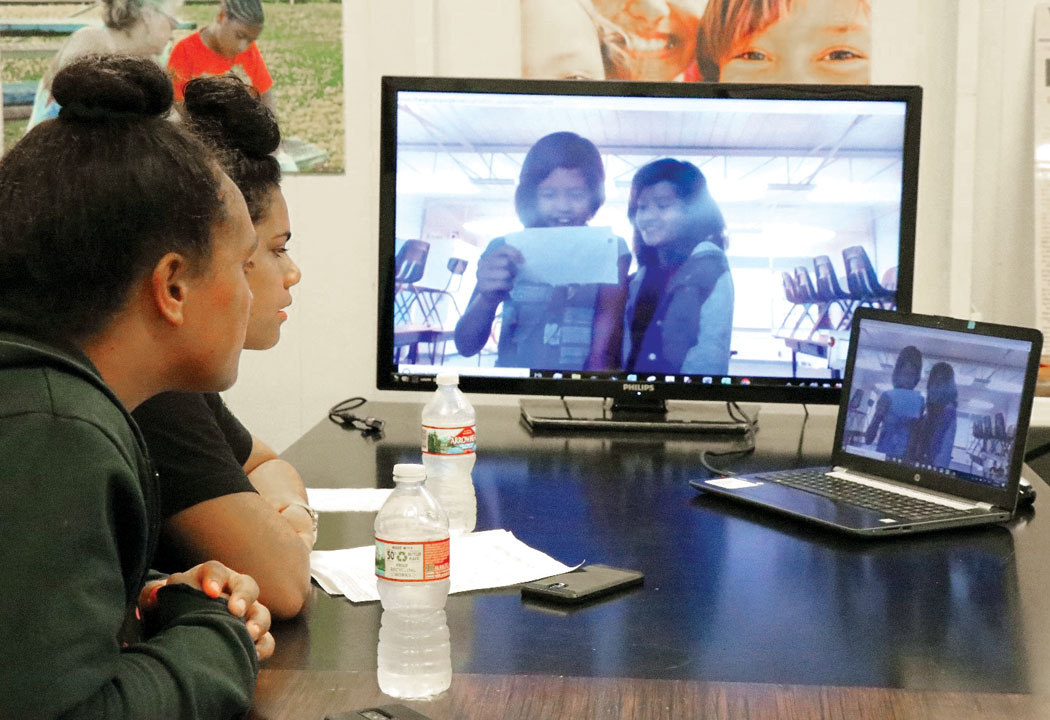
Healthy Meal Services Receive a Boost
“In 2019, we still have kids on Hawai‘i Island that are going hungry,” Chad says, observing that for some children, the lunch provided at school will be their last meal of the day. “A child has no control over what situation they are born into, and we are here for all kids no matter what their situation is.”
Through the support of the County of Hawai‘i Office of Housing and Community Development’s Block Grants, BGCBI was able to construct a brand-new commercial certified kitchen at the Hilo program property, which now provides 100 Hilo youth with a full hot meal before going home for the evening. The organization’s 2020 goal is to deliver full meals to Kea‘au, Pāhoa, and West Hawai‘i program locations.
“We have the ability to execute the expansion,” Chad says. “We just need like-minded individuals to help with the resources to make this initiative free for struggling youth.”
To underscore the importance of the healthy meal service, Chad relates a story from one of his kitchen volunteers: an eight-year-old youth asked her for a piece of tin foil during the evening meal service. She asked the child why, and he replied that he wanted to take food home so that his sister and mother could benefit from the healthy meal as well.
As part of the Boys & Girls Club’s daily programming, youth commit one hour towards the completion of their homework through an incentive-based homework assistance program called “Power Hour.” BGCBI staff has observed that the supplemental nutrition provided helps students to focus more during the dedicated homework time.
“The Organization Has Blossomed”
The Hawai‘i Alliance of Nonprofit Organizations named Chad as the 2018–19 CEO Emerging Leader of the year. Toby Taniguchi, KTA Superstores CEO and a Boys & Girls Club board member, says that under Chad’s leadership, “the organization has really blossomed. We are really proud of what he’s been able to accomplish in this short time. He’s righted the canoe and he’s leading us to a brighter future.”
At the end of the day, the dedicated staff and volunteers who keep the Boys & Girls Club of the Big Island running are not working for the money. They are rewarded by seeing the development of the kids, and the transformative impact that positive mentors and a safe haven has on them. “If you invest in the kids now,” Chad says, “our communities will be stronger, our communities will flourish, and the problems that we see now will be resolved by these kids.” ❖
For more information:bgcbi.org

